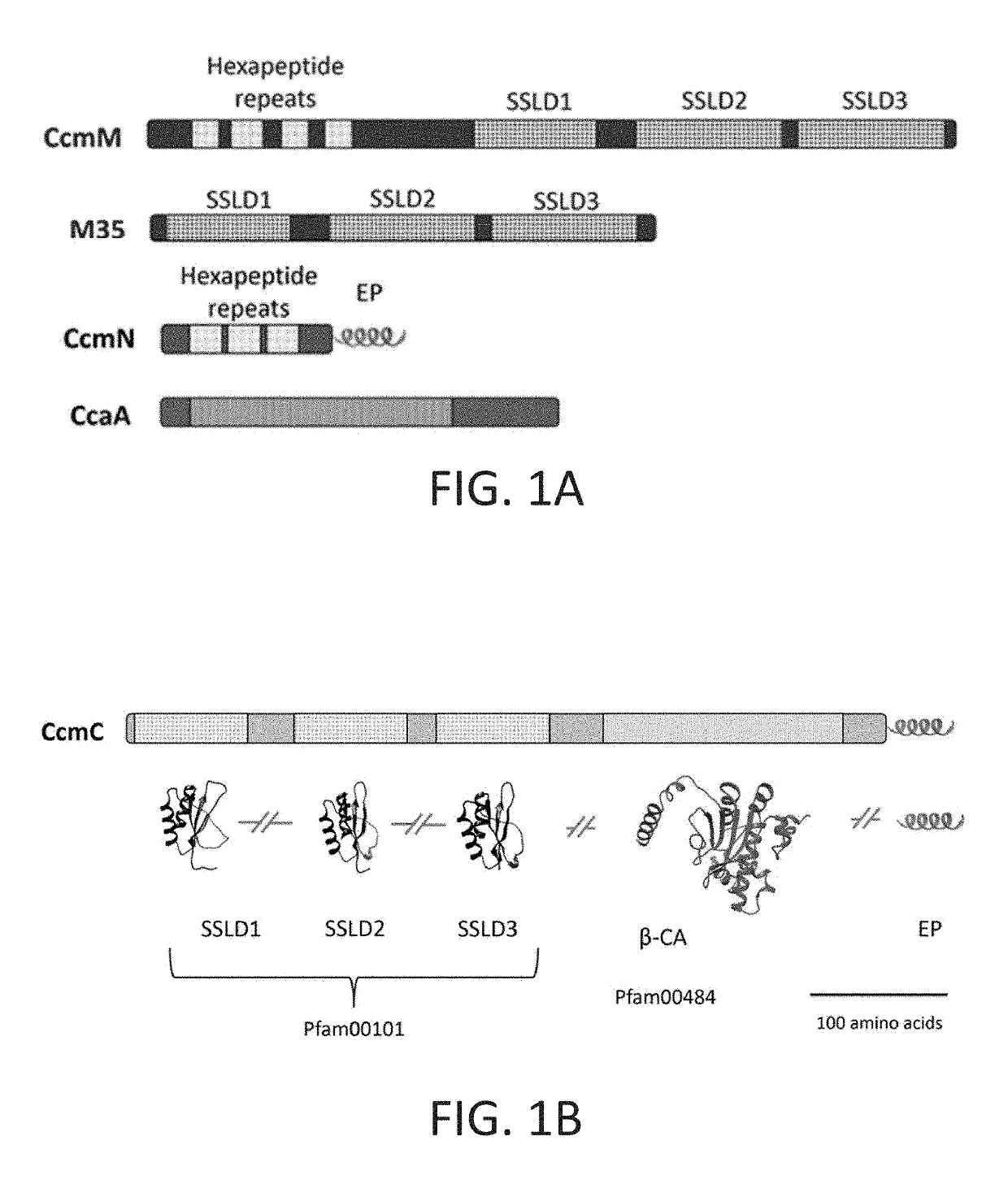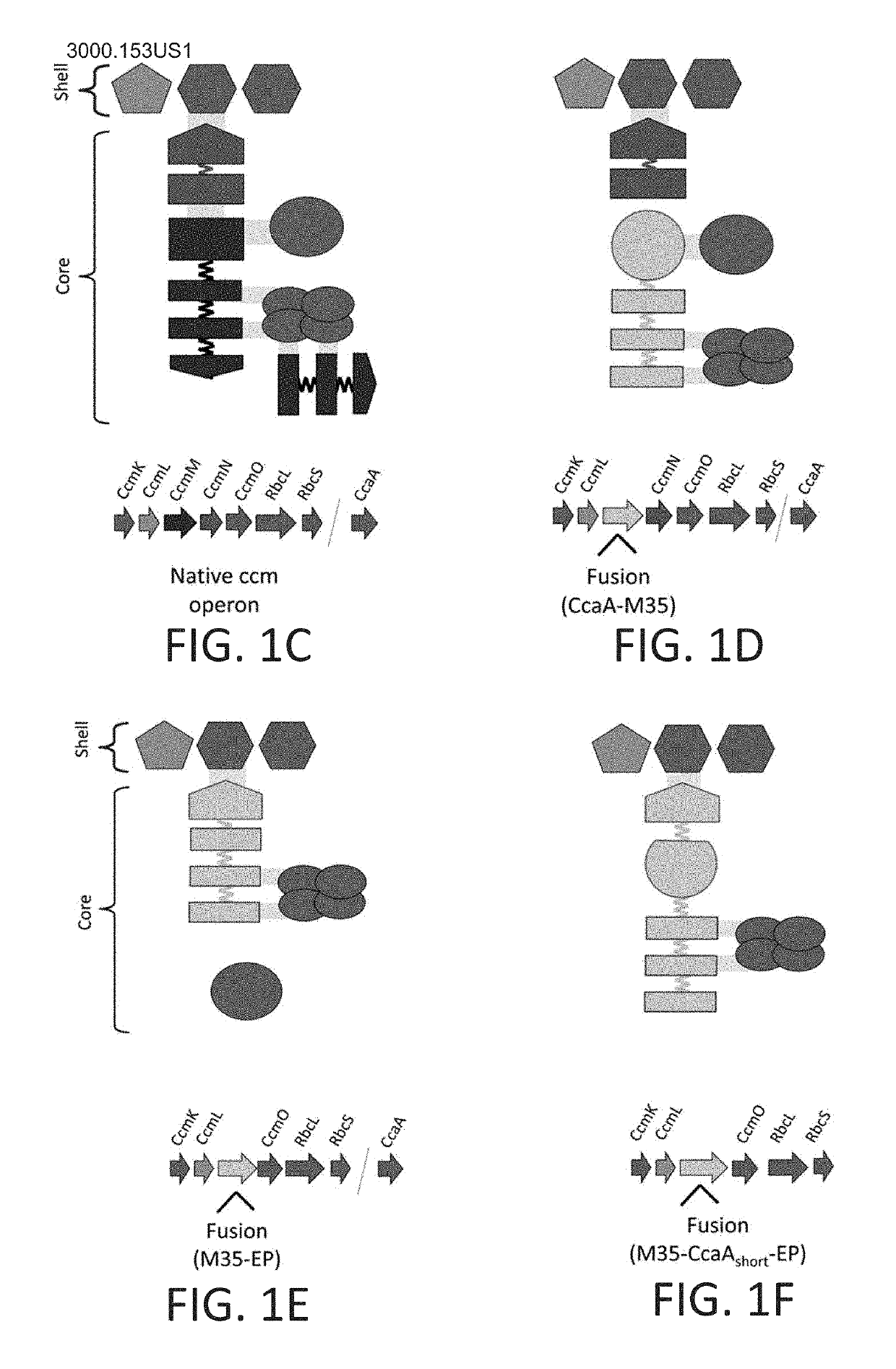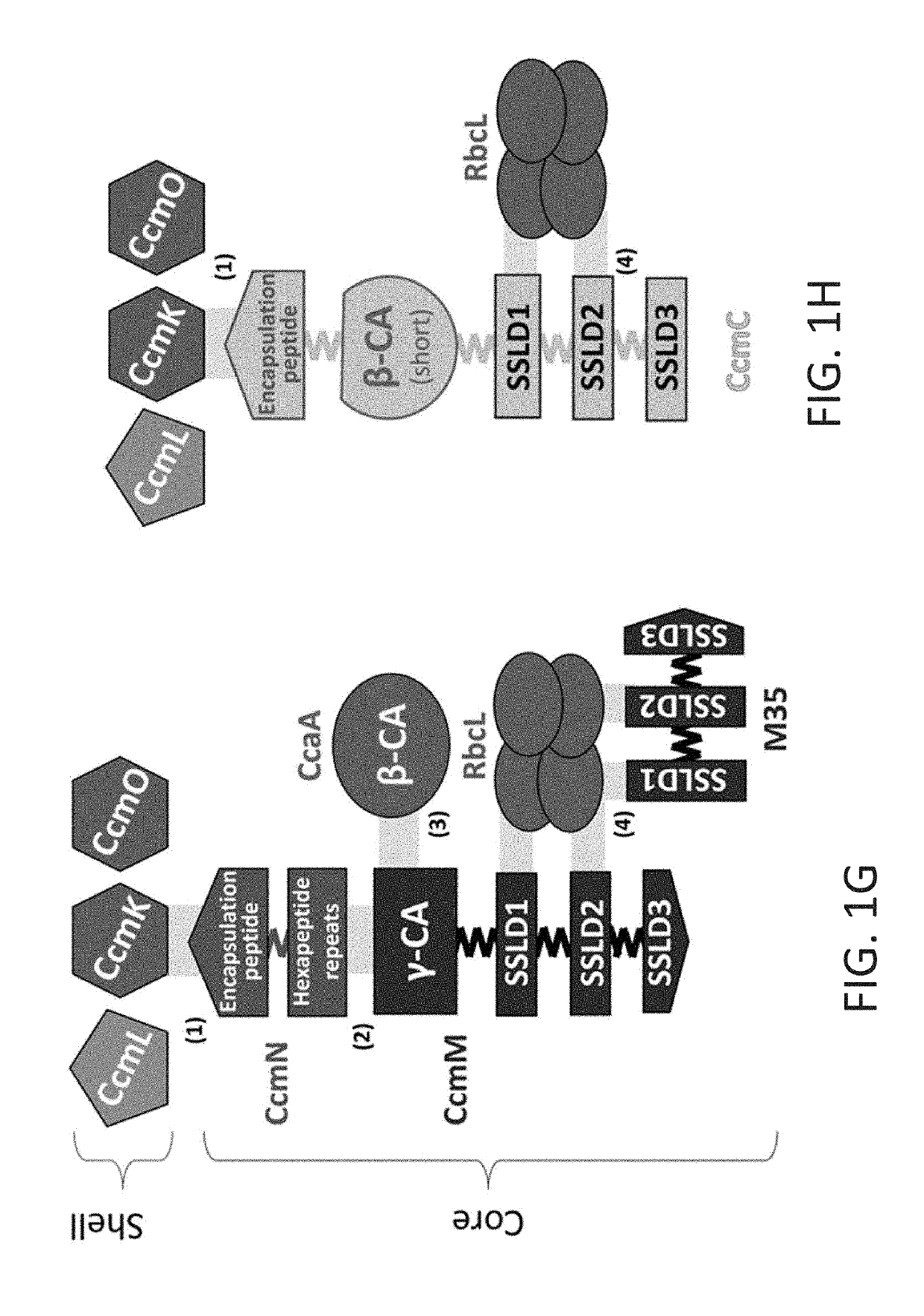Minimized cyanobacterial microcompartment for carbon dioxide fixation
a technology of carbon dioxide fixation and cyanobacterium, which is applied in the direction of bacteria peptides, peptide sources, peptides, etc., can solve the problem that the structure has not been generated
- Summary
- Abstract
- Description
- Claims
- Application Information
AI Technical Summary
Problems solved by technology
Method used
Image
Examples
example 1
and Methods
[0146]This Example describes some of the methods that were used during development of the invention.
Cyanobacterial Strain and Growth Conditions
[0147]Synechococcus elongatus PCC 7942 (Syn 7942) cultures were grown in 250 ml baffled Erlenmeyer flasks with 60 ml BG-11 medium (Rippka et al., 1979) buffered with 10 mM HEPES pH 8.0 under the following growth chamber settings: temperature of 30° C., light intensity of 40 moles photons m−2s−1, shaking at 150 rpm and CO2 concentrations of 5%, 3% or air. Unless otherwise indicated, experiments were performed in cultures at exponential growth phase (OD730=0.4-0.7).
Mutant Generation
[0148]Synechococcus elongatus PCC 7942 cells were transformed as described by Kufryk et al. (2002). Cultures were grown to OD730=0.5 and concentrated to OD730=2.5 by centrifugation at 5000 relative centrifugal force (rcf) for 5 minutes. Five microliters of plasmids (˜1 μg of DNA) prepared from E. coli DH5α cells were added to 400 μl of the cyanobacterial c...
example 2
a Chimeric Protein that Supports Native Core Assembly and Cell Growth in Air
[0173]This Example describes construction of chimeric proteins that assemble into a carboxysome core.
[0174]The design took into consideration observations that proteins evolve via domain fusions that are reflective of protein-protein interactions. The inventors predicted the domain boundaries in the CcmM, CcmN and CcaA proteins from Synechococcus elongatus PCC 7942 (FIG. 1A) using InterPro (Hunter et al., 2012). Three chimeric genes were then constructed encoding proteins that could assemble into a carboxysome core:
[0175]1) a ccaA-M35 fusion construct, where the γ-CA domain (Pfam00132) of CcmM was replaced by β-CA (Pfam00484) (FIG. 1D);
[0176]2) a M35-EP fusion construct, where three SSLD domains (Pfam00101) and their native linkers were fused to the EP (FIG. 1E); and
[0177]3) M35-ccaA(short)-EP fusion construct, containing three SSLDs and their native linkers, the β-CA, CcaA with a short segment of its C-term...
example 3
aces Four Proteins of the β-carboxysome Core
[0185]This Example illustrates assembly of CcmC into functioning carboxysomes.
[0186]Fluorescence and transmission electron microscopy were used to assay for formation of carboxysomes (FIG. 3). In the wild-type / RbcL-GFP strain, the carboxysomes were in the typical arrangement, along the longitudinal axes of the cells (FIG. 3 panel A). RbcL-GFP in the COREΔ2 / RbcL-GFP strain was diffuse throughout the cell, as expected for strains lacking carboxysomes (Cameron et al., 2013) (FIG. 3 panel B). Occasional polar foci (n=150 / 556) were observed. Such polar foci may be due to misfolded and aggregated labeled protein. For example, polar localization of protein aggregates (Rokney et al., 2009) and false foci (Landgraf et al., 2012) have been observed in E. coli. Such foci may also be due to interaction with the remaining gene products of the carboxysome operon. They are not indicative of carboxysome formation, as the COREΔ2 / RbcL-GFP strain has an her ...
PUM
| Property | Measurement | Unit |
|---|---|---|
| temperature | aaaaa | aaaaa |
| pH | aaaaa | aaaaa |
| pH | aaaaa | aaaaa |
Abstract
Description
Claims
Application Information
 Login to view more
Login to view more - R&D Engineer
- R&D Manager
- IP Professional
- Industry Leading Data Capabilities
- Powerful AI technology
- Patent DNA Extraction
Browse by: Latest US Patents, China's latest patents, Technical Efficacy Thesaurus, Application Domain, Technology Topic.
© 2024 PatSnap. All rights reserved.Legal|Privacy policy|Modern Slavery Act Transparency Statement|Sitemap



